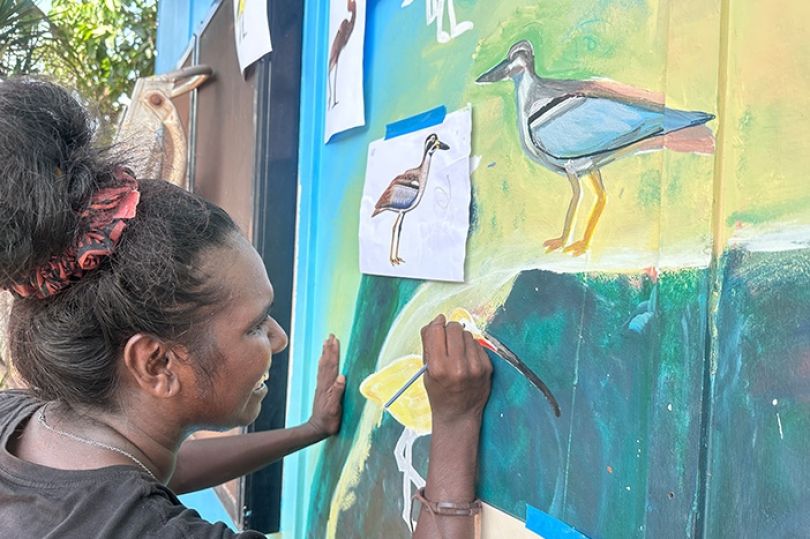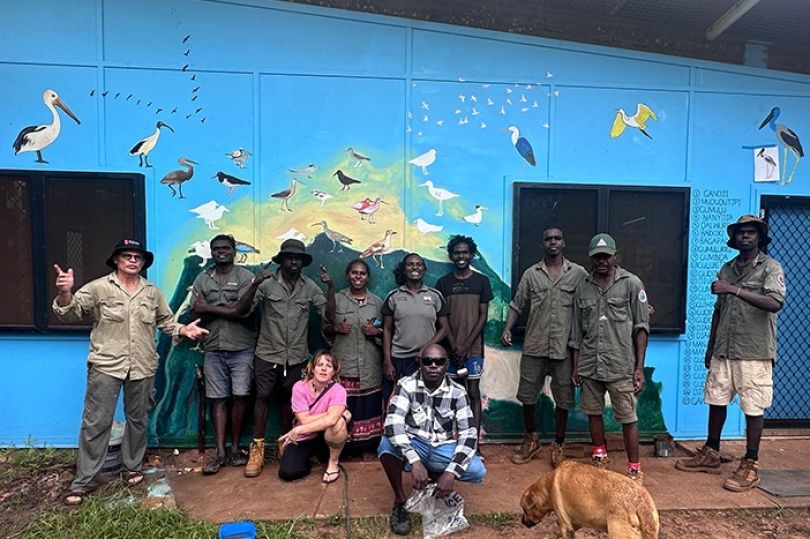
Batchelor Institute Conservation and Ecosystem Management trainer Jaemie Page and artist Tamara Cornthwaite have been working with Crocodile Island Rangers in Milingimbi to create a mural of shorebirds, supporting their Certificate III studies in fauna recognition, mapping and biodiversity monitoring. Most of the rangers have been studying with Batchelor Institute for over 3 years now.

The Crocodile Islands, Maringa Country, are an internationally important site for migratory shorebirds. Many coastal birds can be found on the shoreline feeding on the abundant shellfish. Traditional Owners and rangers started monitoring shorebirds with BirdLife Australia back in 2015 and have since continued this work with Dr Amanda Lilleyman each year. In 2024 they released a book Coastal Birds of Maringa Country which helped guide the design of birds in the mural.
The background of the mural is the island of Nilpeywa (Crocodile Island), a prime feeding ground for shorebirds, with extensive tidal sand flats, mangroves and mud flats.
Monitoring shorebirds requires great skills to identify and count them from a distance, often in large groups of birds. Painting the mural provides opportunities to deeply explore and share knowledge around how the birds look, where they live, how they behave and other unique identifying features, as well as the English and Yolngu names, stories and the different ways we classify and describe the world.
Building training around existing community projects is central to the delivery model of the CEM team. This ensures that training remains relevant and grounded in a familiar context, helping participants build skills in using their tools, reporting methods, digital technologies, and communication strategies. It also provides rangers with an opportunity to reflect on the history of the project (shorebird monitoring) and remember how it came about, why it is important and ensure it is following the cultural protocols that were established.
The mural is a beautiful artistic and cultural public expression and celebration of shared knowledge for school kids and other community members to reflect on and inspire future work and learning.








